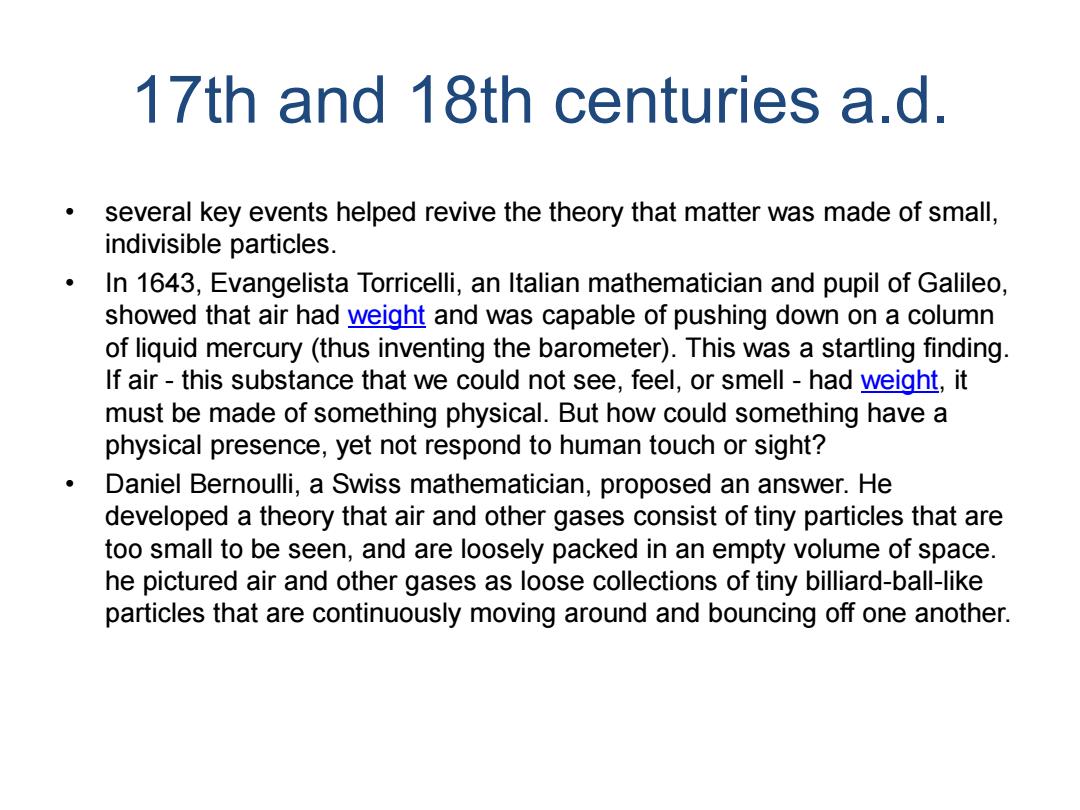正在加载图片...

17th and 18th centuries a.d. several key events helped revive the theory that matter was made of small, indivisible particles. In 1643,Evangelista Torricelli,an Italian mathematician and pupil of Galileo, showed that air had weight and was capable of pushing down on a column of liquid mercury(thus inventing the barometer).This was a startling finding. If air-this substance that we could not see,feel,or smell-had weight,it must be made of something physical.But how could something have a physical presence,yet not respond to human touch or sight? Daniel Bernoulli,a Swiss mathematician,proposed an answer.He developed a theory that air and other gases consist of tiny particles that are too small to be seen,and are loosely packed in an empty volume of space. he pictured air and other gases as loose collections of tiny billiard-ball-like particles that are continuously moving around and bouncing off one another.17th and 18th centuries a.d. • several key events helped revive the theory that matter was made of small, indivisible particles. • In 1643, Evangelista Torricelli, an Italian mathematician and pupil of Galileo, showed that air had weight and was capable of pushing down on a column of liquid mercury (thus inventing the barometer). This was a startling finding. If air - this substance that we could not see, feel, or smell - had weight, it must be made of something physical. But how could something have a physical presence, yet not respond to human touch or sight? • Daniel Bernoulli, a Swiss mathematician, proposed an answer. He developed a theory that air and other gases consist of tiny particles that are too small to be seen, and are loosely packed in an empty volume of space. he pictured air and other gases as loose collections of tiny billiard-ball-like particles that are continuously moving around and bouncing off one another